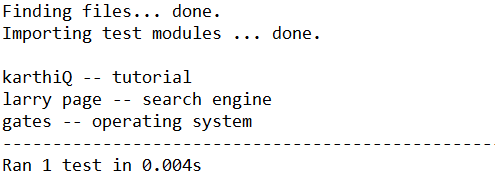Smartest Options for the Proper Python CSV options Now

An operating system is a set of program files and routines that control the resources of a computer and provides access to the services of a computer. Specifically, an operating system allows hardware components of a computer, including transformers and drives, to communicate with its software components, such as applications and data instruction sets. In modern personal computers, workstations and other computing devices, operating systems are essential, which computers cannot operate without. You can have the best choices now with the python read csv this is important now. You can have the best options for the same now with the perfect understanding. With the Python module, you can have proper options in this case.
Overcoming idle time

Engineers originally developed operating systems as a way to overcome the idle time of CPUs. CPUs are responsible for executing computer commands, and even the slowest processors can process data in microseconds or millionths of a second. In comparison, other components of the computer, such as hard drives are considerably slower. To avoid idle processors or remain idle until other components have a chance to respond, engineers have created operating systems. These systems overcome downtime by automatically ordering or sequencing CPUs to perform successive tasks, pending the completion of previous tasks. In this case, this is a very important matter now and that is the reason you can have a proper idea for the same. The details are right here and that is the reason that you can find all the options open.
User Interface
Without an operating system, a user would be unable to provide a modern computer with instruction sets or commands. Prior to the adoption of operating systems, engineers communicated instructions to computers by physically pushing buttons, flipping switches or connecting cards and other hardware components. Using an operating system simplifies the instruction process, as the user can give virtual, software-based commands through a keyboard input device, mouse, or other. For personal computing, users rely on the graphical user interface or GUI operating systems. These operating systems offer interfaces with selectable, interactive icons and other graphical elements that appear in the menu selection screens. Older operating systems had textual interfaces, which required users to type in prompt responses to initiate operations.
Process Management
A process refers to an active program or program that a computer is currently running. In addition to programming code, a process contains temporary data and variables. For a computer to run processes, it is necessary to use an abundance of resources, including memory, program files, CPU time, and input or output devices. An operating system serves as a process manager of a computer and is responsible for a conglomerate, and the organization of these resources. Other processes for managing an operating system’s tasks include creating and removing processes, scheduling processes, and synchronization processes.
Peripheral devices
Without an operating system, interacting with peripheral or secondary devices, nonessential input or output devices on a computer would be much more complicated. This is because operating systems interpret the data that provides devices and present them to users in standardized formats. For example, even if a user loads an image file to a computer via a CD-ROM or a USB storage device, an operating system will present that image file to the user in the same way.
